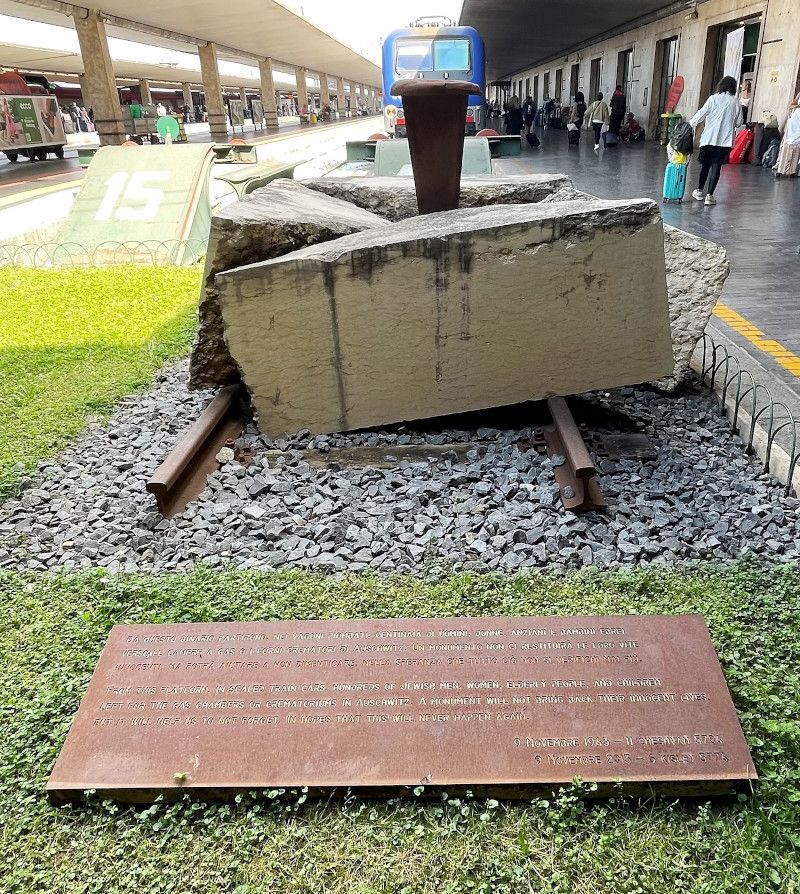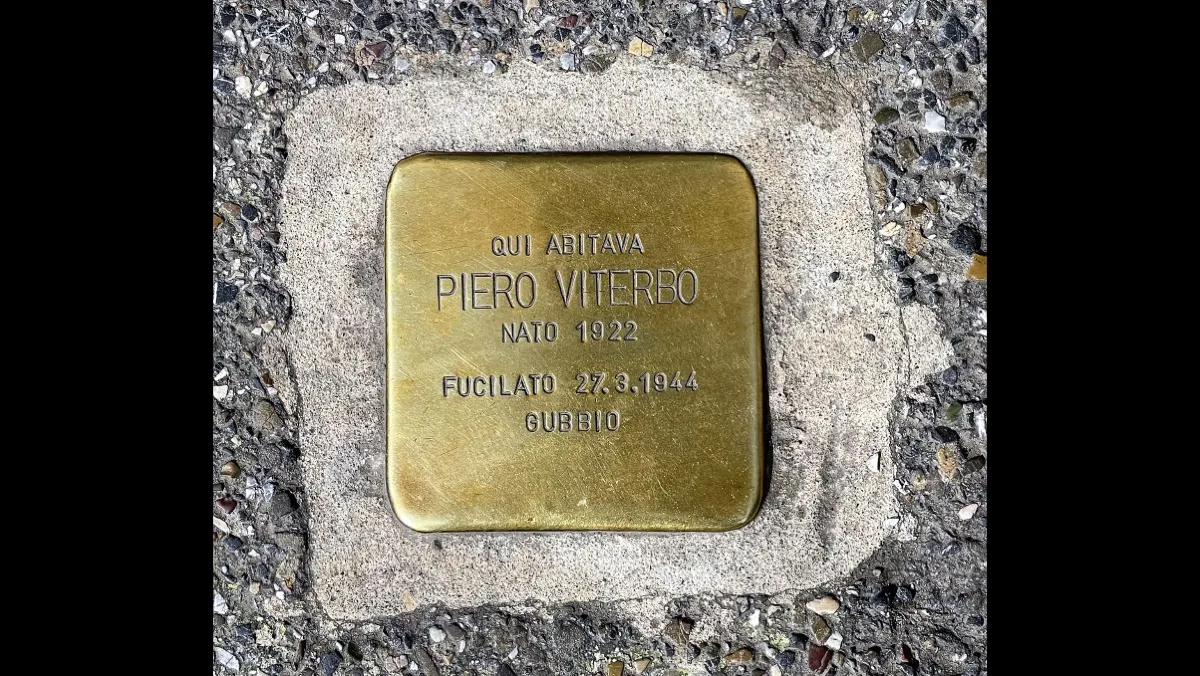The Nazis murdered six million Jewish men, women, and children in the Holocaust.
Every victim was an individual “whose hopes and dreams were destroyed,” the Holocaust Encyclopedia reminds us.
German soldiers destroyed Piero Viterbo’s hopes and dreams on March 27, 1944. They murdered the 22-year-old Italian Jew in cold blood.
A shiny, four-by-four inch brass plate in a busy Florence sidewalk near the train station marks Viterbo’s last-known residence.
Melinda and I had seen such plates in Germany.
The plates are the focus of a project started in Cologne 1992 by German artist Gunter Demnig to commemorate individual Holocaust victims by showing where they lived.
The plates, set in stone blocks, are called in German Stolpersteine, or “stumbling stones.” More than 70,000 have been placed in 1,200 cities, according to a 2019 article in The Guardian, a British newspaper. “Together, the Stolpersteine now constitute the largest decentralised monument in the world,” explained the paper’s Eliza Apperly.
“Unlike some other memorials that focus on specific persecuted groups, the Stolpersteine honour all victims of the Nazi regime, including Jewish, Sinti, Roma, disabled, dissident, and Afro-German and ‘asocial’ citizens. The 70,000th Stolperstein was laid for Willy Zimmerer, a German man with learning disabilities murdered at Hadamar psychiatric hospital outside of Frankfurt.”
“Stumbling stone” mocks an antisemitic trope from Adolf Hitler's Germany. Nazis who tripped over a protruding paving stone would sometimes say, “A Jew must be buried here.”

Holocaust memorials, perhaps most conspicuously Peter Eisenman’s massive Memorial to the Murdered Jews of Europe in Berlin, have been erected across Europe since World War II. There is a memorial in the Florence train station — a large steel spike smashing a stone block and an explanatory plaque — at the end of track 15, where Jews were loaded onto boxcars and sent to Nazi death camps.
“The [stumbling] stones represent a new vision of urban remembrance,” Apperly also wrote. “If Eisenman’s large monument, set in the governmental heart of Berlin, emphasises the scale and political culpability of the Holocaust, the Stolpersteine focus on its individual tragedies.
“The inscription on each stone begins ‘Here lived’, followed by the victim’s name, date of birth, and fate: internment, suicide, exile or, in the vast majority of cases, deportation and murder.”
Though Italy, Germany’s partner, surrendered to the Allies and switched sides in 1943, German troops continued to fight ferociously against advancing American and British armies. At the same time, the Nazis began rounding up Italian Jews for deportation and death. Some fled to the Allied armies. Others hid in the countryside or joined anti-Nazi partisans.
I suspect Demnig hoped viewers of the Stolpersteine might take time to research Holocaust victims named on the plates. After we got home, I Googled “Piero Viterbo.”
Through an Internet translation feature, I discovered that he was born the son of Guido Viterbo and Elda Fornari in Livorno on February 10, 1922.
He had fled Florence. According to records, a German unit “in search of partisans and draft dodgers” in rural areas “around Gubbio” arrested a group of men including “three young Jews, Alberto and Pier Luigi Guetta, and Piero Viterbo. They were shot in the back as they walked away with the other prisoners, who were released in the meantime.”
There are at least 75 stumbling stones placed throughout historic Florence, whose art treasures, including Michelangelo’s David and the marble Gothic cathedral, make the city one of the most popular tourist attractions in Italy.
But places where Nazi barbarism was carried out are not always marked. Melinda and I learned about that, too.
We spent most of the summer of 1982 on a Kentucky Institute for International Studies program in Bregenz, Austria.
A newspaper reporter then, I interviewed Ferdinand Hagen, whose family had opposed Hitler and the annexation of Austria to Nazi Germany. Hagen lost a scholarship to the University of Innsbruck because he refused to join the Hitler Youth.
When he was drafted into the Nazi army, his father, a union railroad worker under Gestapo surveillance throughout the war, urged him to desert. He ultimately honored his father’s wish. (The elder Hagen also helped Free French troops capture Bregenz late in the war by guiding them around Nazi minefields.)
“What are your favorite places in Bregenz?” he asked me.
“The model train shop across from the big church,” I replied, grinning. “I love to look in the windows at the wonderful trains.”
“That’s the shop on Kornmarktstraße [Corn Market St.],” he nodded, adding, “That’s where the Nazis burned the books.”
I always remembered his words afterwards on trips to the shop.
--30--
| Tip Jars |








